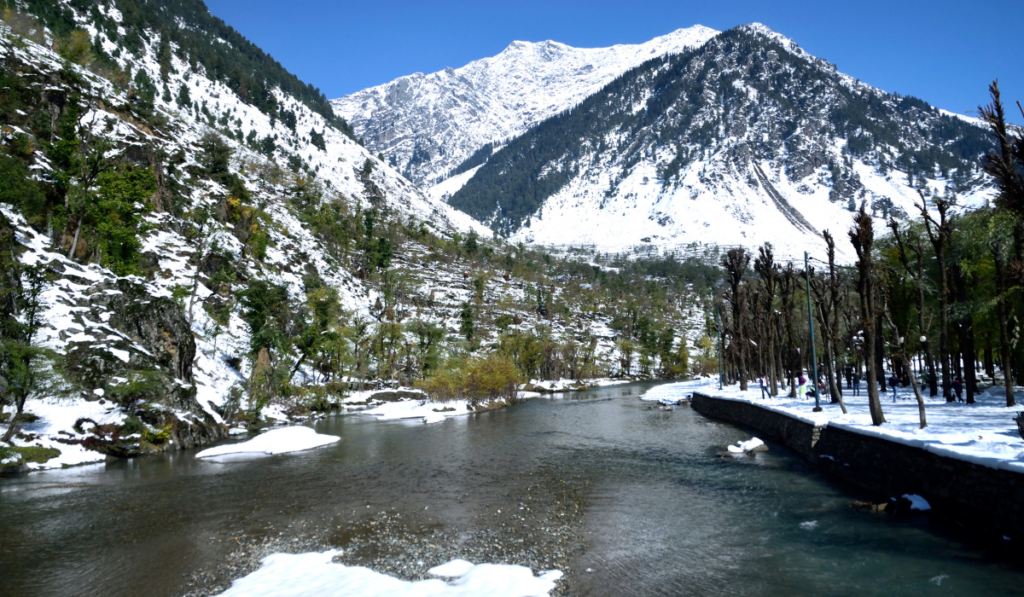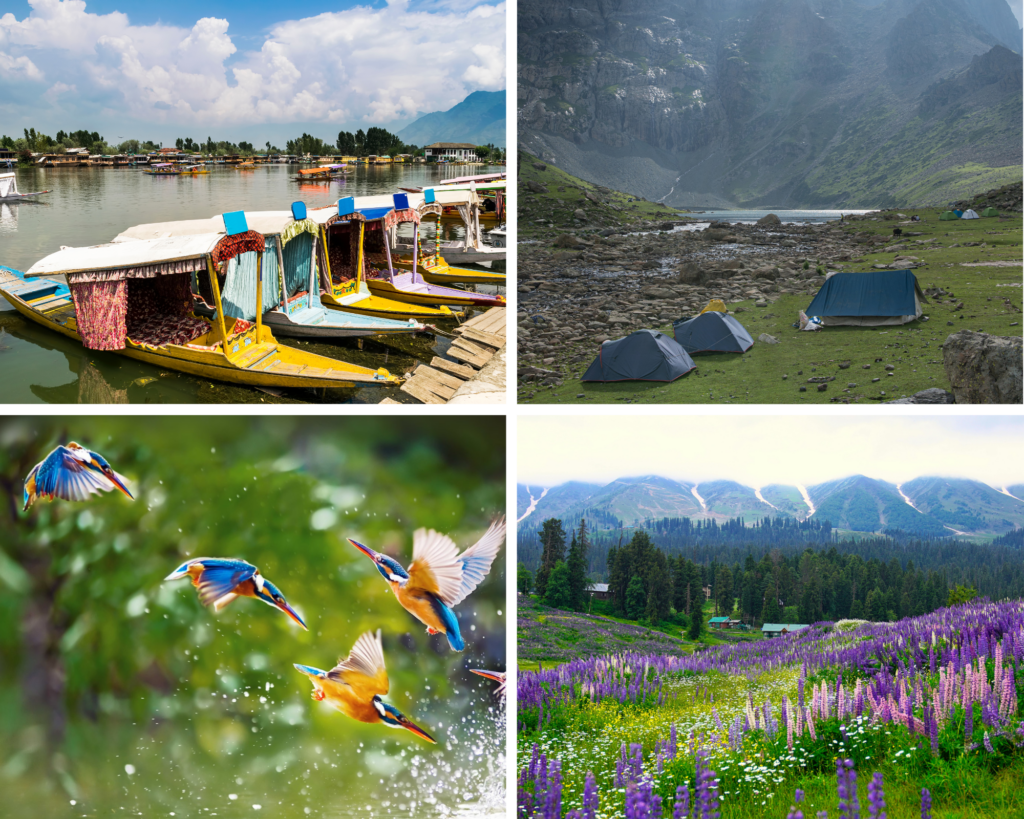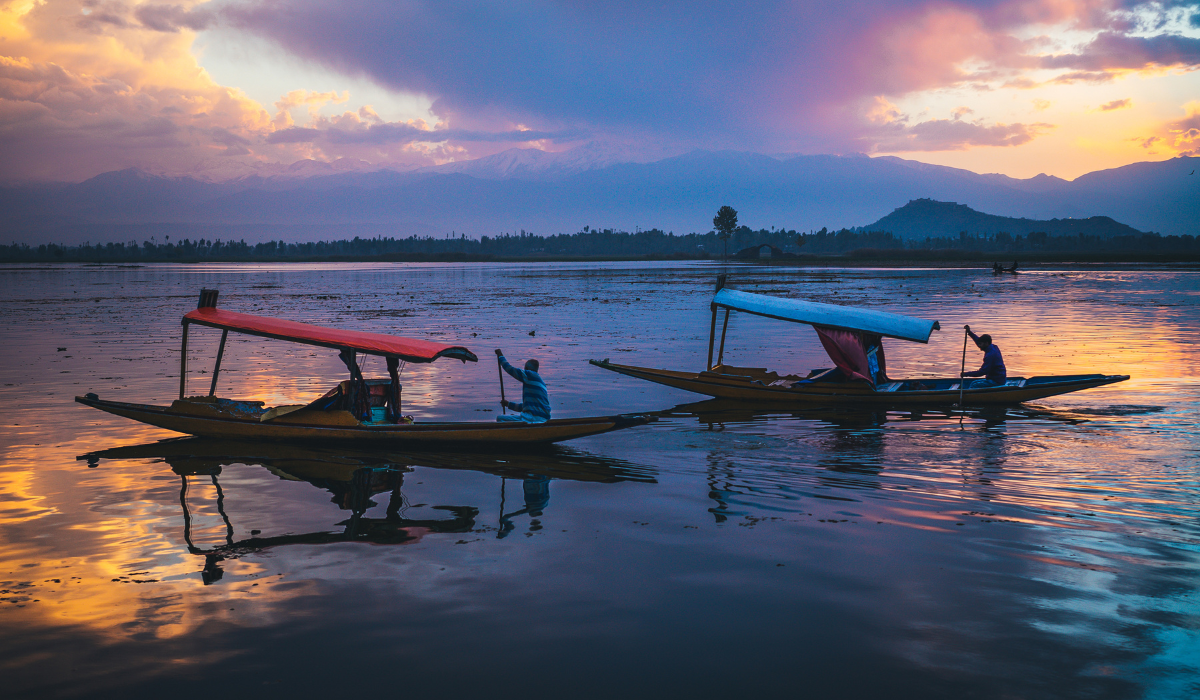Renowned for its natural beauty, Jammu and Kashmir pride themselves on having some of the most beautiful lakes in India. These lakes vary in size, depth, and importance. They form an integral part of the culture, ecosystem, and history of the region. These lakes in Jammu and Kashmir, from beautiful high-altitude lakes to placid lowland water bodies, are great natural wonders and have great relevance for the local people and wildlife.
Introduction to the Lakes in Jammu and Kashmir

The geographical features of Jammu and Kashmir range from green valleys to snow-capped peaks, with the lakes beautifully reflecting this uniqueness. Some lakes in Jammu and Kashmir are usually located in altitudes different from those of the other lakes-in the lush green valleys of Kashmir on the one hand and in the rugged terrains of Ladakh on the other. These lakes assume much significance in the local culture, supply of water, agriculture, and tourism.
Famous Lakes
Dal Lake
- Location: Srinagar, Kashmir
- Area: 18 square kilometers
- Significance: Dal Lake is the most famous of all the lakes in Jammu and Kashmir, often called the “Srinagar’s Jewel.” Known for its picturesque views, floating gardens, and houseboats, it is a symbol of Kashmir’s natural beauty. Dal Lake is also an important site of inhabitation of the Kashmiri culture, having markets and vendors floating on boats, giving it a distinctive character.
Nigeen Lake
- Location: Srinagar, Kashmir
- Area: 3.6 square kilometers
- Significance: Given its serene beauty, Nigeen Lake is often referred to as Nightingale Lake. Nigeen Lake being quieter than Dal Lake is known for its tranquil atmosphere. Many visitors flock here in search of a quieter, peaceful escape from the hustle and bustle of Dal Lake.
Wular Lake
- Location: Bandipora District, Kashmir
- Area: 200 square kilometers
- Significance: Being the second biggest freshwater lake and an important member among the freshwater lakes of Jammu and Kashmir, Wular Lake is significant. It contains a large number of different types of plants and animals and is considered to be an important site for the habitation of migratory birds during the winters.
Manasbal Lake
- Location: Near Srinagar, Kashmir
- Area: 13 square kilometers
- Significance: With naturally beautiful scenery, Manasbal Lake is surrounded by greenery and terraced gardens. It has more historical importance as it houses a 16th-century Mughal garden.
Deepest Lakes
Sattal Lake
- Location: Near Srinagar, Kashmir
- Depth: 65 meters (213 feet)
- Significance: Sattal is a high-altitude deep freshwater lake with mixed dense forests around it. It attracts nature lovers and trekkers alike. Sattal Lake, known for its clear and clean waters, serves as home to different species of fish.
Pangong Lake
- Location: Leh-Ladakh (Near Jammu and Kashmir border)
- Depth: 100 meters (328 feet)
- Significance: Pangong Lake, known for its delicate blue waters, has a relatively high elevation of about 4,350 meters (14,270 feet). It was one of the deepest and most famous lakes in Jammu and Kashmir and, owing to that, has thousands of tourists annually. The lake’s depth and those barren mountains give a beautiful, dream-like ambiance to nature.
Largest Lakes
Wular Lake
- Location: Bandipora District, Kashmir
- Area: 200 square kilometers
- Significance: Wular Lake, being the biggest lake of Jammu and Kashmir, has a key role in supporting flood control, irrigation, and ecological balance. It is a home for many migratory birds and witness the flow in large numbers especially in winter.
Tso Moriri Lake
- Location: Ladakh
- Area: 120 square kilometers
- Significance: Tso Moriri is one of the largest lakes in Ladakh, lying at an altitude of 4,595 m (15,077 ft). It is noted for its clear blue waters and mountain area. The lake forms part of the Changthang Wildlife Sanctuary, a haven for wildlife species such as the Tibetan gazelle and snow leopard-much endemics in this region.
Unique Lakes with Cultural Significance
Sheshnag Lake
- Location: Pahalgam, Kashmir
- Altitude: 3,650 meters (11,975 feet)
- Importance: Sheshnag Lake is beautiful as a high-altitude lake and, in the Hindu religious context, is held in great reverence. The lake is part of the annual Amarnath Yatra and regarded as sacred by the devotees.
Kesar Lake
- Location: Poonch District, Jammu
- Altitude: 3,656 meters (11,995 feet)
- Significance: Kesar Lake, an Alpine Lake, lies in the Poonch region of Jammu. One of the lesser-known lakes in Jammu and Kashmir, surrounded with beautiful meadows and dense forest, it has a cultural significance and is tied into local legends.
Also Read : Finding the Secrets of Prashar Lake: A Peaceful Treasure in the Mountains
Ecological Significance of the Lakes
The lakes here have ecological prominence. These lakes provide a habitat and breeding ground for a variety of wildlife—migratory birds, fishes, and aquatic plants. Lakes such as Wular and Manasbal act as life support in the region by regulating water supply, controlling floods, and providing habitat for innumerable species.
- Biodiversity in the Lakes in Jammu and Kashmir: Many of the lakes are rightly designated as Wetlands of International Importance under the Ramsar Convention. Wular Lake, for example, supports over 70 species of fishes and is very important for migratory waterfowl, including the endangered Siberian crane.
- Water Management: The lakes in Jammu and Kashmir, especially Wular and Dal, are vital to local water management systems. They act as a reservoir for irrigation, drinking water, and hydropower generation.
Tourism and adventure around the lakes

The lakes in Jammu and Kashmir are important tourist destinations for many recreational activities in themselves. Examples of these activities are:
- Shikara Ride: The most popular activity between the two lakes, Dal and Nigeen, is the shikara ride, which allows tourists to experience the lakes’ beauty differently.
- Trekking and camping: High-altitude lakes such as Tsomoriri, Tsokar, and Sattal have become popular among adventure-seekers for trekking, camping, and nature photography.
- Bird watching: Lakes such as Wular and Manasbal would tempt even the laziest into bird watching as they are a veritable haven and irresistible spot for both migratory and local bird species.
Conclusion
Not only are the lakes in Jammu and Kashmir picturesque, but they are also vital in maintaining the watershed of the region, cultures, and economy. From the world-famous Dal Lake in Srinagar to the serene and tranquil Pangong Lake and Tsomoriri at high altitude, each and every lake has a story to tell. These lakes in Jammu and Kashmir are an excellent example of the stunning diversity of the region and have won admiration from visitors worldwide. Thus, Jammu and Kashmir remains a foremost destination for nature enthusiasts, adventure seekers, and seekers of serenity.
In conclusion, the lakes in Jammu and Kashmir provide more than the mere beauty of nature; they are an environmental treasure that can sustain the ecology, culture, and heritage of the region. Thus, whether you seek a peaceful getaway, an adventurous hike, or one of those places where you could connect with nature, Jammu and Kashmir’s lakes will provide it all.
FAQs
How can I reach Dal Lake in Srinagar?
With the high altitude of Srinagar, the town that serves as summer capital for Jammu and Kashmir, one would expect to be particularly high up. Road travel is convenient here, and a soothing shikara ride can be enjoyed by visitors on Dal Lake from the famous Dal Lake dock. Air travel is also available; from the airport, visitors may take a bus or a taxi to reach the lake from varied parts of the region.
Are there houseboats on Dal Lake?
Yes, floating houseboats on Dal Lake are famous. These houseboats gives a special experience where the visitor can enjoy being on water lazily, with views of beautiful mountains and gardens. They are one of the eye-catching attractions of the region and are a must-to-experience for any traveler visiting Kashmir.
Do Pangong and Tsomoriri lakes require special precautions for their safety?
Yes, it is safe to visit the high-altitude lakes of Pangong Lake and Tsomoriri; however, the travelers must acknowledge the difficulty level presented by the altitude. They should take precautions in acclimatization in order to avoid altitude sickness. It is recommended to carry enough water and food, appropriate gear, and preferably travel with a guide or tour group.
What activities can one do in Wular Lake?
The activities that Wular Lake offers are bird watching as it is an important habitat for migratory birds. Boating and fishing make for great pastimes as well. The scenic backdrop of the lake is a great opportunity for nature photography, picnics, and a casual stroll along the lake’s shore.
Are the lakes in Jammu and Kashmir open all year round?
Most of the lakes in Jammu and Kashmir, such as Dal Lake and Wular Lake, are open year-round. However, some lakes situated at higher altitudes, such as Sheshnag Lake and Tsomoriri Lake, may be arduous to reach during the winter months due to heavy snowfall or freezing. It is advised to check with local sources on the weather condition before planning trips to these lakes during winter.








